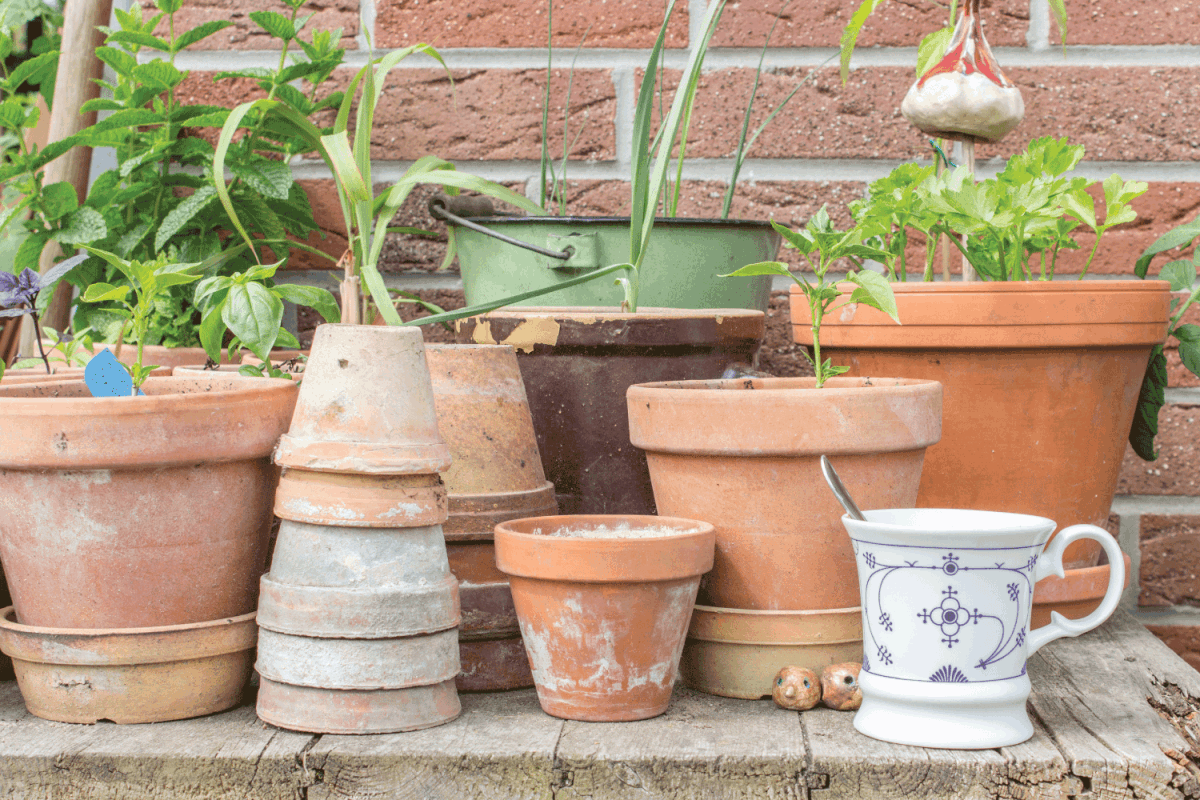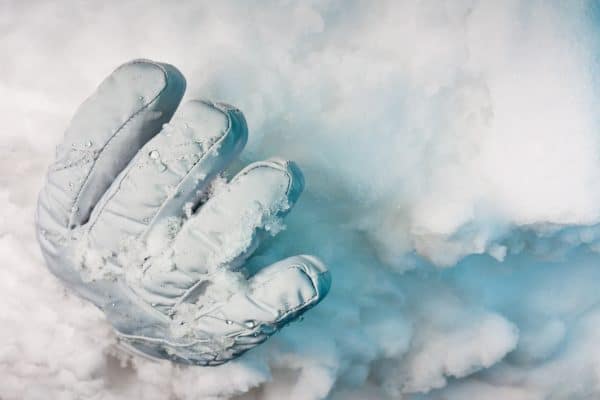For those of us who picked up the gardening habit and started our own urban jungle, we know that terracotta pots are central to achieving healthy, happy plants. Their porous nature enables the plant to breathe better and allows optimal moisture management. But it is also their porous nature that makes them prone to damage with changing weather, especially during winter. We did our research so that we can provide you tips on how to keep your terracotta pots from cracking in freezing weather.
Keeping them stored indoors is the best way to ensure that terracotta pots do not crack in freezing weather. This is easily done for smaller pots but may be a challenge for bigger and heavier pots. Some ways to protect them include placing pot feet or bricks to elevate them from the freezing ground. If possible, provide a covering or move them to spaces under the side of the house with a roof or awning if they cannot be placed indoors. For empty pots, you can also keep them upside down and cover them with water-repelling materials to prevent moisture from entering the clay.
Keep reading as we enumerate the ways on how to protect your pots. You'll also learn not only about painting your terracotta pots but also sealing them the artistic way.
NOTE: WE MAY GET A COMMISSION IF YOU DECIDE TO MAKE A PURCHASE THROUGH THESE LINKS. THERE'S ADDITIONAL NO COST TO YOU. CHECK THE BOTTOM OF THE PAGE FOR MORE INFORMATION.

How To preserve terracotta pots In Freezing Weather
An additional way to protect your terracotta pots is to use a sealant in both the inner and outer walls. Doing this ensures that water does not enter the porous material as that can easily expand when frozen, thus causing your terracotta pots to crack.
Painting your pots also helps to lengthen their lifespan, especially those placed outdoors as the added layer of paint can prevent flaking. Flaking makes the pots vulnerable to physical damage as the porous materials can get exposed. Flaking also thins out the thickness of the wall making it less tolerant to mechanical stress.
The paint also prevents the pots from accumulating debris which can scale the outer walls. This debris can either be from molds, dirt stains, watermarks, or efflorescence (those salty white blooms that you sometimes see on the outer part of the pots).

For unpainted pots, you should try to remove the debris build-up as much as possible. You can use soapy water to scrub them except for efflorescence. It is better to scrub them dry using a good brush as the salt can be reabsorbed if you wet the pots.
For those with molds, you can use a bleach solution (diluted one-part bleach and ten parts water) to rid of the molds especially when you’re storing them over the winter in time for your spring planting. But take precaution in using too much bleach as this can erode into your pot.
Be very careful in moving the pots, especially if they have been in use for quite some time. Make sure that the pots are not wet when you try to move them as they can easily break.
What do you do with outdoor pots in the winter?
Ideally, you should move the pots within an enclosed space with enough sunlight during winter especially if you have plants in them. This is easily done if the pots are small but it can be a challenge for bigger pots.
For empty pots, you should clean them thoroughly prior to storing them. Preferably, you need to turn them upside down while in storage. If you can’t bring them to your garden shed or other storage areas where you intend to keep them, then make sure to cover them with non-porous material to protect them from moisture.
If the pot has something planted, make sure to place them on top of bricks or pot feet so that it does not come in contact with the freezing ground directly.
Ideally, outdoor pots should be painted as this can help maintain their mechanical integrity. The paint forms a barrier that prevents moisture from coming in, which otherwise freezes inside the walls of your pot during winter. You can also double up the protection by putting a sealant.
What paint do you use on terracotta pots?
The type of paint that you use for your terracotta pots depends on whether they will stay indoor or outdoors, and the final effect that you would like to create.
Acrylic and latex paint can work well for both indoor and outdoor pots. They are easy to apply, inexpensive, and readily available from your local paint shop. Acrylic paints are especially good if you want to play with colors as most would have bright hues that pop when applied, even without priming with a base coat. For latex paints, you may consider using a base coat so that you get more of the hue that you have picked without the natural color of the pot competing with the paint.
You can also consider using waterproofing or sealant to protect your paint if used for outdoor pots, so the art will last longer. Chalk paint can also be used for painting your terracotta pots especially if you like the weathered look to give you either the rustic vibe or a country feel.
Make sure that you prime your new pots before painting them. For old pots that you want to spruce up, clean them thoroughly before painting. Cleaning removes the debris that can otherwise affect how your paint attaches to your pots.
Can you use Mod Podge to seal terracotta pots?
You can use the Mod Podge for your arts and crafts to seal your terracotta pots. Although there are several types of Mod Podge available, all can act as glue, sealant, and as a final finish. To learn more, you can refer to the Mod Podge Formula Guide.
On a clean, dry pot, you can apply two to three coatings of Mod Podge to both the inner and outer layer of your pot, if you don’t intend to paint prior to sealing. Make sure to rest 30 minutes in between each coat so that the Mod Podge can have time to dry.
However, if you want to add some color to your pot, then apply the paint first. Wait for it to dry before applying the sealant. Or if you want to go full scale on your pot decoration and decide to decoupage it, then the Mod Podge can also work well. You can use any decorative prints to use for your pot—be it napkins, wrapping paper, or small cutouts of your printed textile. You can find examples of how to do it in this video.
How long do terracotta pots last?
Terracotta starts to degrade within 1 to 3 years of use. Painting, glazing, and not overwatering your plants in terracotta pots can help to extend their lifespan.
Take Home Points
Terracotta pots are a good option for your planting needs. Not only do they provide the plants with good air exchange but water exchange as well. Their main advantage also serves as a loophole since the water that seeps through their pores can also cause the pots to break from within when exposed to colder temperatures.
Thus, in wintertime it is important to keep them away from the ice as possible by physically moving them away, elevating your pots from the ground, and adding a layer of sealant to keep the moisture out.



